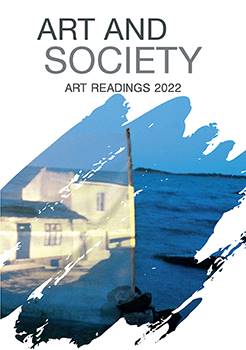Миметично и антимиметично в театралния спектакъл от периода на социализма в България
Mimetic and antimimetic in the theatrical performance from the period of socialism in Bulgaria
Author(s): Petar DenchevSubject(s): Theatre, Dance, Performing Arts, Fine Arts / Performing Arts
Published by: Институт за изследване на изкуствата, Българска академия на науките
Keywords: theatre directing; theatre space; performance organisation; theatre of socialism
Summary/Abstract: Bulgarian theatre, during the time of totalitarian socialism, is placed in an extremely provocative situation – on the one hand. there are normative institutional requirements for making new art, the so-called ‘socialistic realism’, and, on the other hand. the natural creative aspirations for free expression of the artists. These impulses put directors, scenographers and actors in a transgressive position; in order to realise their views, the institutional and power expectations have to be attacked, for which they will be sanctioned. Several ideological concepts intervene in this conflict, which are over-politicised and taken out of their aesthetic context – what is realism and what dimensions it can have; what is mimetic and what is antimimetic. Clarifying these conflicts and what their practical dimensions were can shed new light on this historical period and the creative attitudes thereafter. It is very important to point out the boundary between propaganda concepts and the functioning of aesthetic terms in their original context. The paper examines three iconic performances from the period of socialism, which confront the boundaries of understandings of the mimetic and the attitude of artists to the performance space as a main clashing territory of these concepts. These are the performances Hamlet by Vili Tsankov, Hamlet by Leon Daniel and Medea by Lyuben Groys, all three from different periods – the 50s, 60s and 70s. Thanks to reviews, memoirs and photographs, the text aims to reconstruct the vectors of these conflicts between normative expectations and creative aspirations during these three performances by three of the most interesting directors who transformed the Bulgarian theatre into an interesting phenomenon during this period. The focus of the use of space also presupposes the study of how attitudes among artists and public expectations are transformed.
Journal: Изкуствоведски четения
- Issue Year: 2022
- Issue No: 2
- Page Range: 249-257
- Page Count: 9
- Language: Bulgarian
- Content File-PDF

